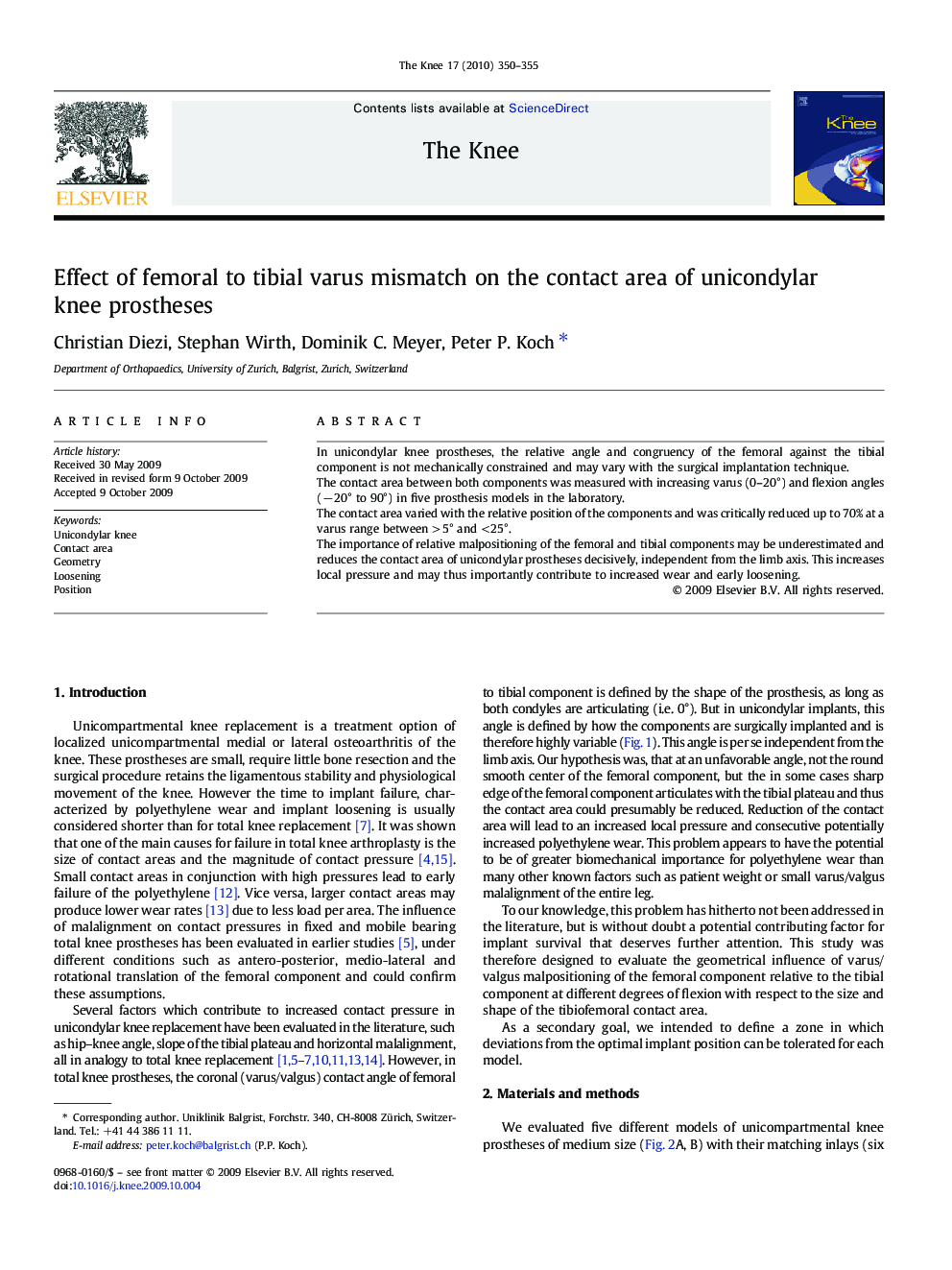| کد مقاله | کد نشریه | سال انتشار | مقاله انگلیسی | نسخه تمام متن |
|---|---|---|---|---|
| 4078331 | 1267254 | 2010 | 6 صفحه PDF | دانلود رایگان |

In unicondylar knee prostheses, the relative angle and congruency of the femoral against the tibial component is not mechanically constrained and may vary with the surgical implantation technique.The contact area between both components was measured with increasing varus (0–20°) and flexion angles (− 20° to 90°) in five prosthesis models in the laboratory.The contact area varied with the relative position of the components and was critically reduced up to 70% at a varus range between > 5° and < 25°.The importance of relative malpositioning of the femoral and tibial components may be underestimated and reduces the contact area of unicondylar prostheses decisively, independent from the limb axis. This increases local pressure and may thus importantly contribute to increased wear and early loosening.
Journal: The Knee - Volume 17, Issue 5, October 2010, Pages 350–355